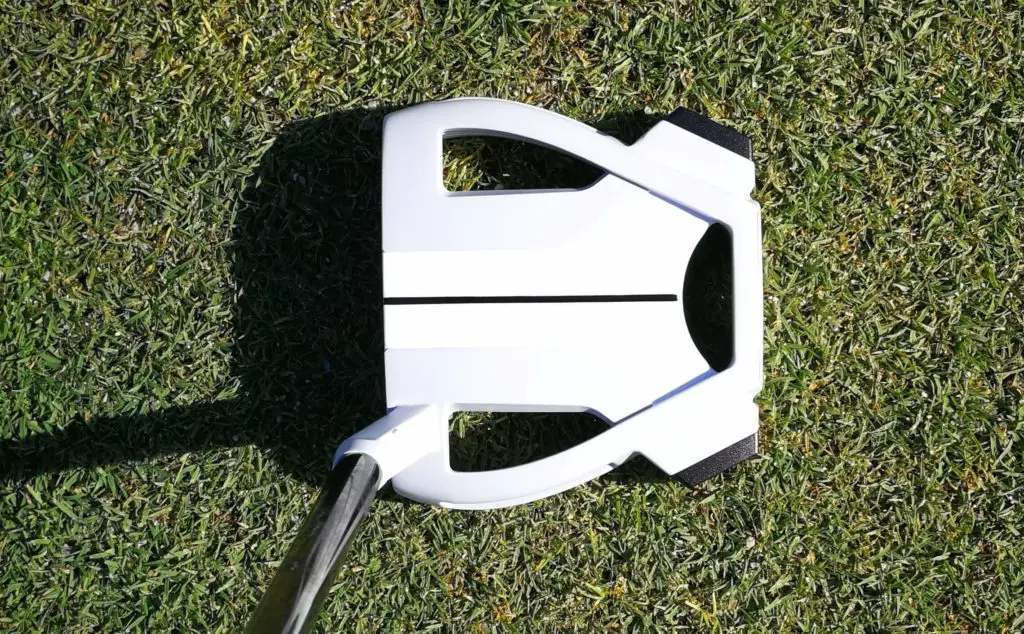The Taylormade Spider X has become the most popular putter on the PGA tour and the LPGA tour. It is comfortably the most widely used putter in the professional game, to the extent that it doesn’t even have a rival in terms of the percentage of professionals that use the same putter.
Perhaps more importantly, the Spider X has also found its way into the bags of many amatuers around the world, including mine. In this in-depth review, I’m going to reveal what it’s like changing to the Spider X, and try to explain why there is something so magical about this particular putter.
Quick Summary of My First Round – The Spider X Performed Like A Champion
My ball striking on this particular day wasn’t very good. My usual draw turned into a power hook, which made it very difficult to shoot a decent score in the monthly medal. Nevertheless, I’m glad to report that the Spider X was worth every penny, and performed like an absolute champion on its first day out. Here’s why.
Reason 1: I didn’t have a single 3 putt
You know how you have those awkward 3 to 5 foot testers during a typical round of medal? Well, for the first time in a long time, I drained every single short putt during my round. Perhaps more importantly, I did it with authority.
There was even a 5 footer for par where I didn’t quite start it online, but it still went bang into the middle of the cup.
Reason 2: I burnt the edge of the hole on several long range putts
Admittedly I’m a little bit bleak that I didn’t actually drop one of these long range beasts. But the lines were so pure, and the only reason they didn’t catch the hole was pace.
Reason 3: I started almost all of my birdie putts online
Unfortunately I left all 3 makeable birdie putts about a hand length too short. But the real point is that they were tracking like a homing missile. I just kept on thinking the greens were faster than they actually were.
There was also one birdie putt which darted a bit left. I was aiming inside right, I under read the break, and I pulled it a bit. It happens.
First round summary: I was very happy with how the putter performed in a relatively competitive round of golf. The thought of going back to my single bend Ping Vault Ketsch 2.0 is no longer an option. The Spider X has literally put my Ping Vault Ketsch 2.0 in the grave.
Ok, so does the Spider X have any weaknesses?
If I had to use an emoji to answer this particular question, this would be my choice: 😶
In all seriousness though, there are a couple of things that you need to keep in mind when using the Spider X with the slight arc.
1: If you currently use a single bend, face balanced putter, you might miss a few putts to the left, if you choose the standard Spider X with the slight arc
This is mainly because there is a bit of extra weight in the toe of the putter (rather than the even distribution between the toe and the heel that you would find in a face balanced putter). This is what creates the 30 degree toe hang, and it also makes it easier to square the putter face at impact if you use a more curved putting stroke (rather than straight back straight through).
2: It may take you a little bit of time to judge speed correctly
You could say this about any new putter, and the Spider X is no exception.
The weight of the putter and the distribution of that weight into the rear end (that’s what those putter weights at the back are for) feels very stable. You may just need to spend some time on the practice greens finding your rhythm with super long putts and makeable 10 footers.
3: You may start seeing more break on the greens (especially from right to left)
Here’s my theory on this. Face balanced putters respond best to a ‘straight back, straight through’ stroke. In time, this type of stroke may neutralize the amount of break you need to factor into a typical putt.
Switching to the Spider X has opened my eyes to the amount of break on most greens. I think this is partially because the putter’s alignment aids are so powerful (it’s stupidly easy to line up) and partially because I’m actually starting the ball on the intended line, rather than putting directly through the break.
To add a little bit of meat to this theory, take a look at the following image:
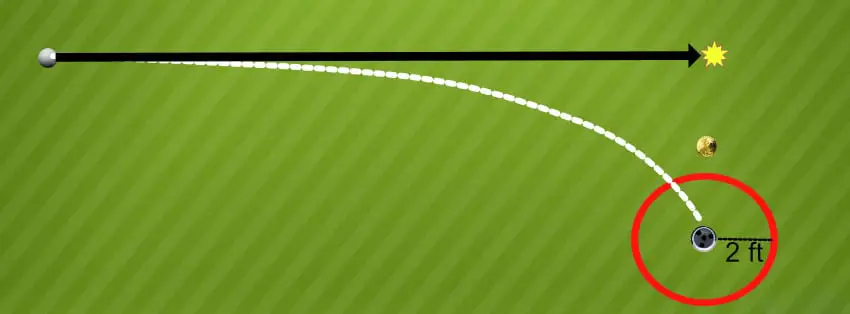
The black line is the true break. The gold coin is where most people aimed during the test. In other words, most amateurs (and even a lot of professionals) have a tendency to underestimate the amount of break on a typical putt.
The Spider X can help you combat this problem (under reading the break) in two ways.
- The alignment aids built into the putter make it fairly easy to get the ball started on the intended line
- The slight toe hang makes it easier to square the putter face at impact if you have a curved putting stroke (ie the opposite of straight back, straight through)
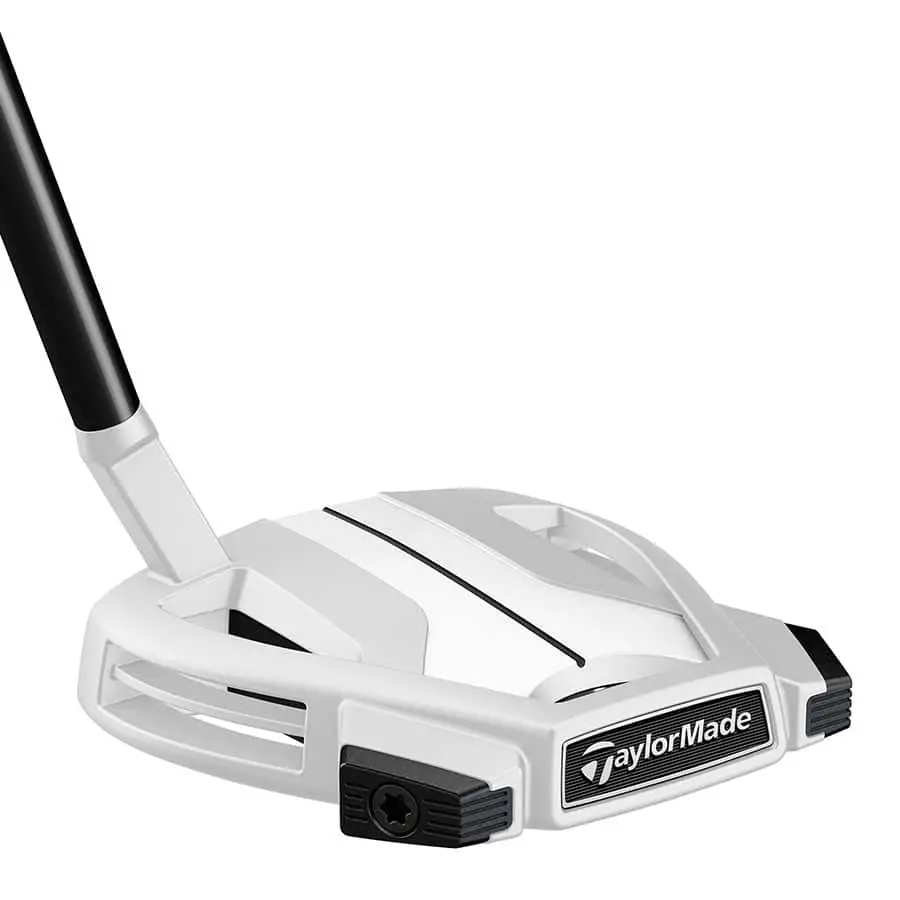

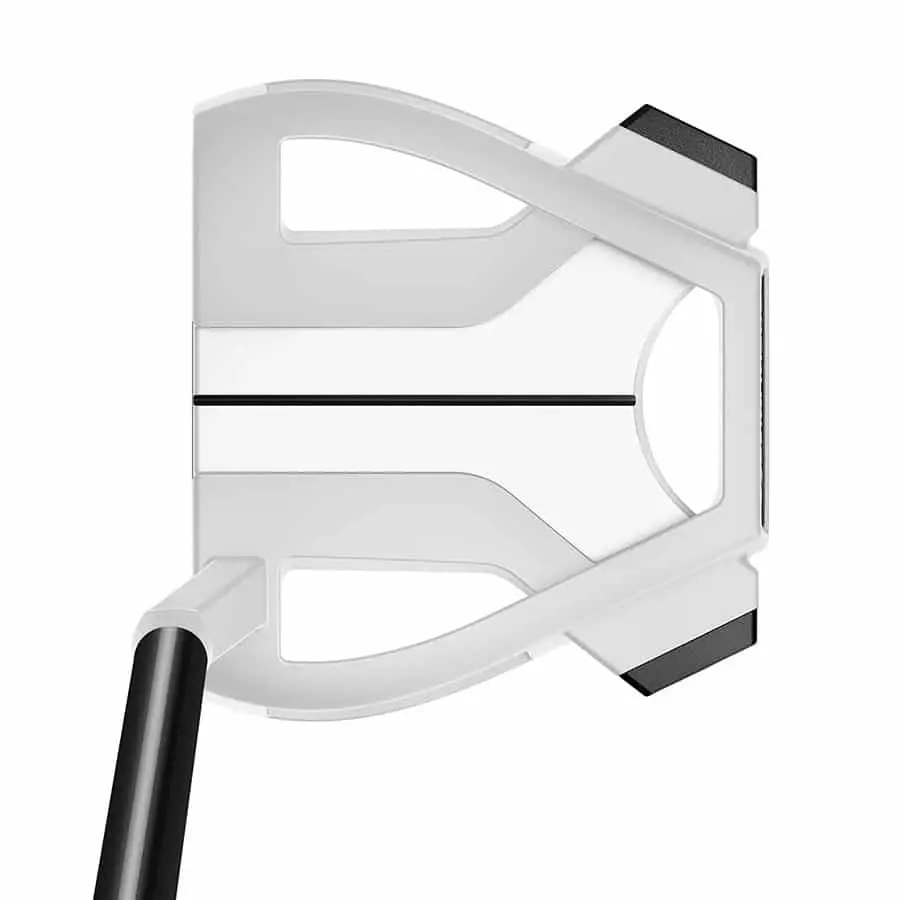
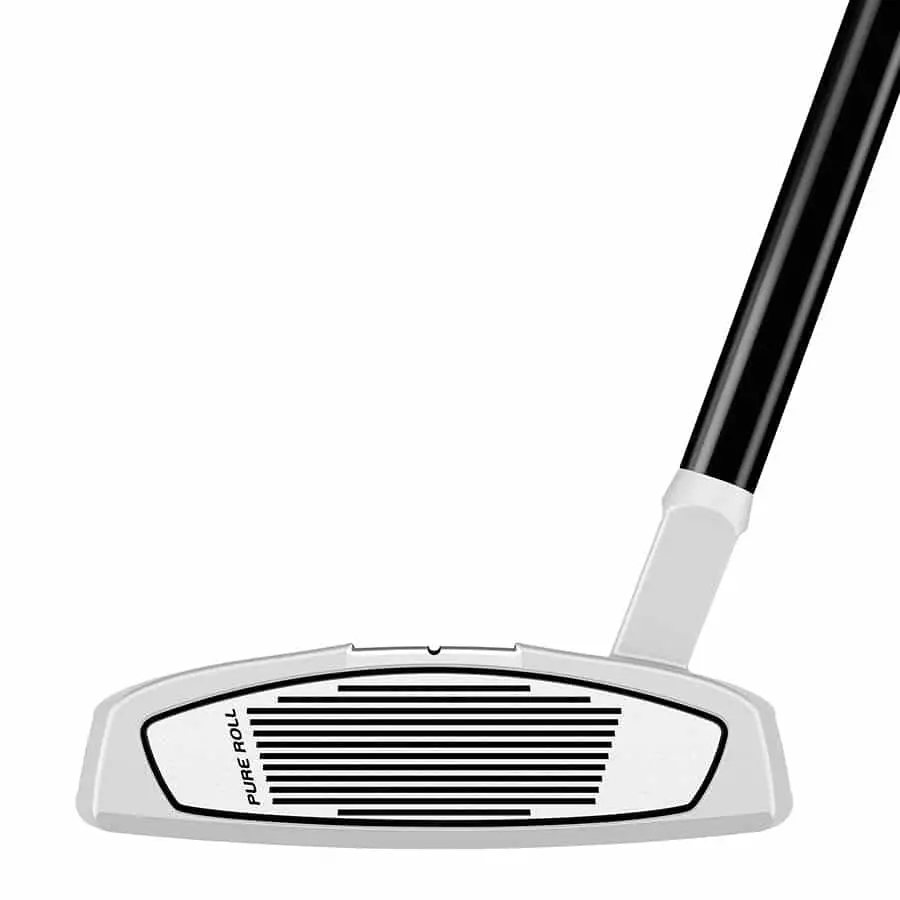
Taylormade Spider X FAQ:
This is my attempt to answer some of the questions that people have about this putter. Here we go.
What is the difference between Taylormade Spider Putters?
There have been several iterations of the Taylormade Spider Putter. The Spider X is by far the most popular version, if measured by the amount of professional golfers that use it.
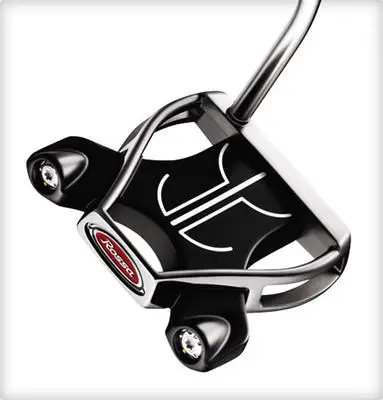
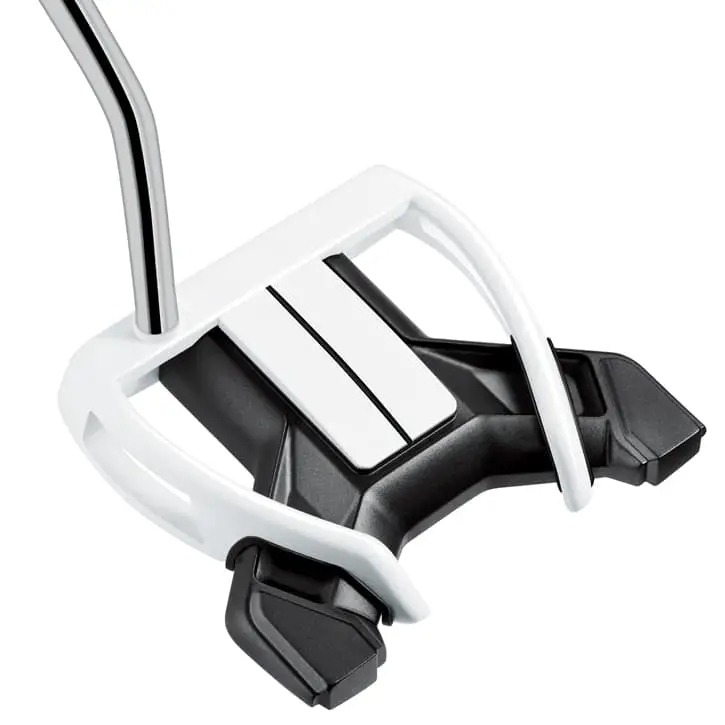

The Itsy Bitsy, Daddy Long Legs and Spider Tour are just some of the many variations that ultimately lead to the the birth of the Taylormade Spider X.
The Itsy Bitsy Monza laid the ground work from a design perspective. However, it was the Spider Tour that really kicked things off with orofessionals. In fact, it was actually one of Jason Day’s prototype Spider Tour putters in 2017 that reinvogorated interest in this particular product line.
Then Taylormade decided to step it up a notch, by releasing the Spider X in 2019. Let’s just say that it was an inspired decision, and adidas are probably a little bit bleak that they are longer the owners of this company, given that the Spider X is the best selling putter in the history of the game.
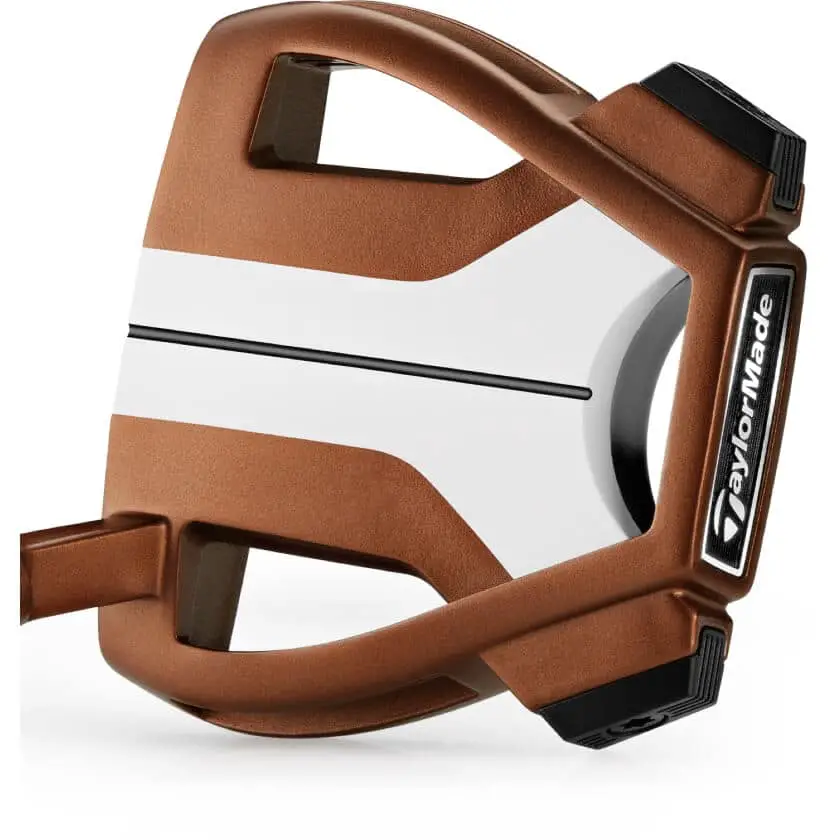
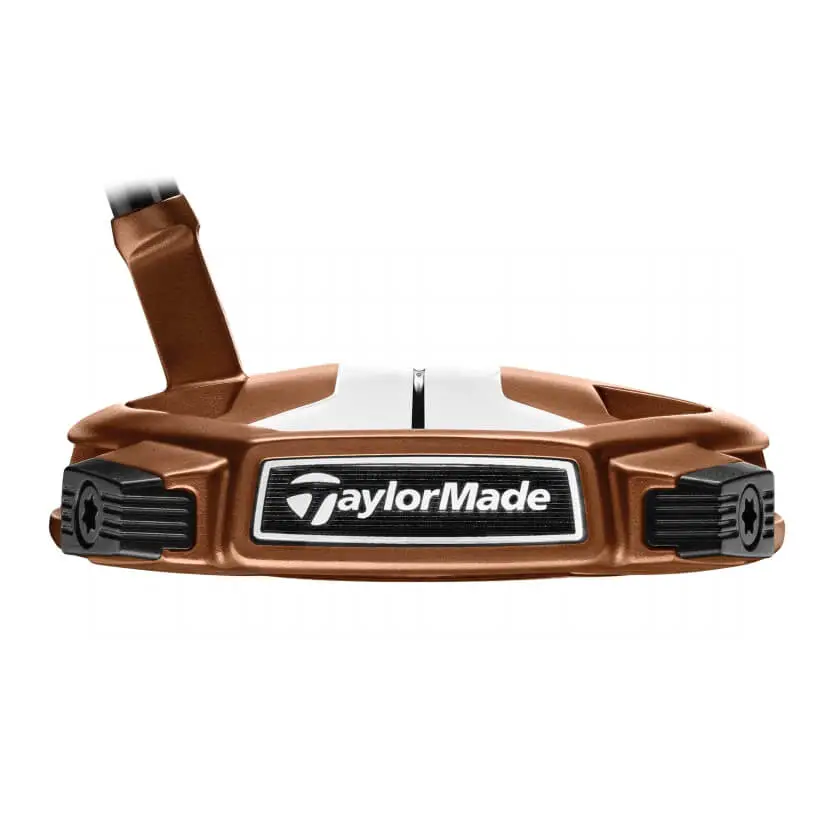
Is the Taylormade Spider X Face Balanced?
There is a version of the Taylormade Spider X that is face balanced. However, most of the professionals use the slight arc version, with a 30 degree toe hang. The images below can help clarify which is which:

This is the standard version of the Spider X, with the 30 degree toe hang. Pay special attention to the hosel. This is also the version that most pros use (eg Rory Mcilroy, Jason Day, Jon Rahm, Matthew Wolff etc).
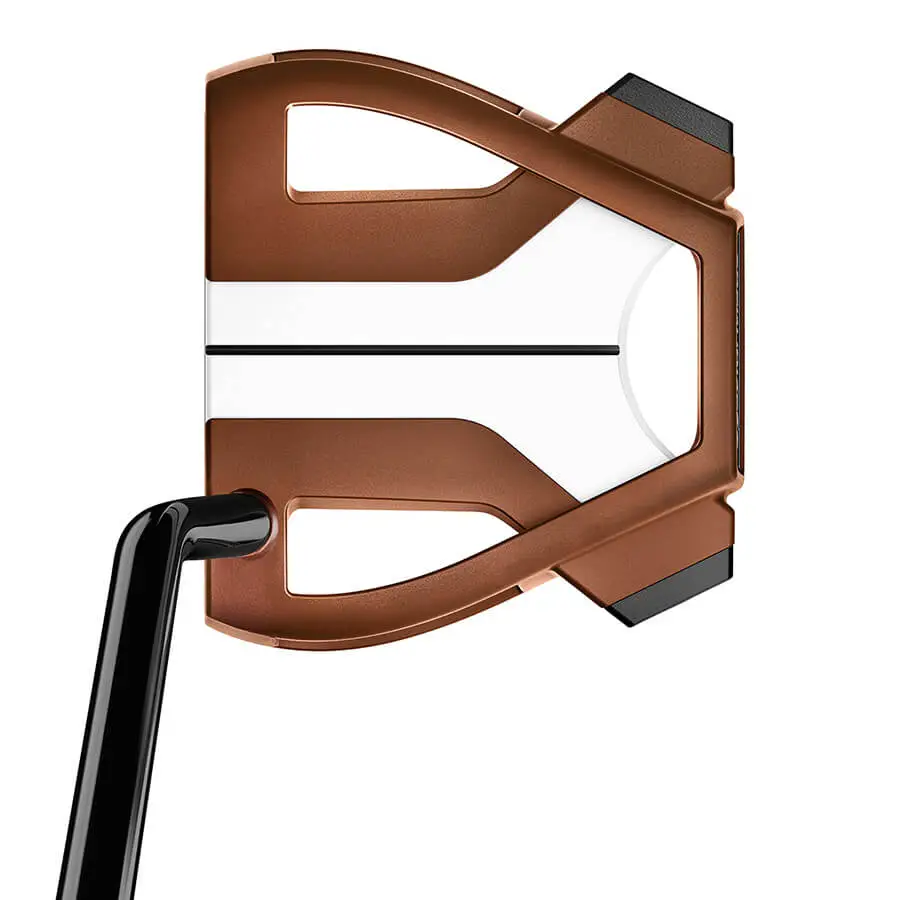
You can clearly see that the Face Balanced version of the Spider X has different hosel that connects that shaft to the putter head. Personally, I much prefer the look and feel of the toe hang version (ie not this one).
Should you get the standard version (slight toe hang) or the face balanced version?
I want you to consider the possibility that straight back straight through is the biggest load of bullshit in the golf industry (Thanks for nothing Dave Pelz). The natural tendency of the human body is for the putter head to curve a little bit inward on the backswing, and the follow through. Trying to maintain a straight back straight through stroke is a bit like trying to hit a cut with your putter. Why on earth would you voluntarily do that? (unless you enjoy missing putts to the right, or double crossing them left)?
I also think you should consider the possibility that face balanced putters encourage a 2 way miss. Because the weight is distributed into the middle of the face, it’s fairly easy to hit a slight pull, or slight push, if you don’t implement the stroke perfectly.
In my case, the tendency is to push putts if I have a face balanced putter in my hands. It’s like I just can’t get the face to close properly. Changing to a toe hang putter has been an absolute godsend. My right miss tendency has pretty much been eliminated. Amen to that.
So in my opinion, just follow the suit of all the pros, and try out the toe hang version. I have a strong feeling that you fill find it easier to start on the correct line, but that’s just my perspective. You could potentially use this rule of thumb if you still aren’t sure which one to get:
- If you have a tendency to push putts to the right – Go for the standard slant neck version with the 30 degree toe hang
- If you have a tendency to pull putts to the left – The face balanced version might be better suited to your stroke.
Should you get the 34 inch version or the 35 inch version?
I have a theory that most people use putters that are too tall for them. Here’s my personal rule of thumb for choosing the correct shaft length:
- If you’re shorter than 6 foot – Go for the 34 inch version
- If you’re 6 foot or taller – Go for the 35 inch version
I’m 5 foot 10, and opted for the 34 inch version. I find it much easier to achieve a balanced position at address with the shorter version. It’s easier to set my spine angle and posture properly, and the weight of the club feels very balanced. I’m pretty happy about this particular decision.
Obvioulsy if you’ve used a 35 inch putter your whole life and you’re worried that it might be too drastic too change to the shorter version, then just stick to what you know.
Why is the Taylormade Spider X so good?
It’s been iterated, upgraded and improved for over 10 years
The original Taylormade Spider Monza came out in 2008. Since then, Taylormade has been tweaking and upgrading the design year in and year out, for more than a decade.
The next major breakthrough came in 2016, when the Taylormade Spider Tour hit the scene. The design upgrade was pioneered by Jason Day, who modified a Taylormade Itsy Bitsy, into the Spider Tour shape that is now so familiar. It quickly became one of the hottest putters on the PGA tour, being bagged by players like Dustin Johnson, Sergio Garcia and Jon Rahm.
And then in 2019, Taylormade took the design one step further, by further reducing the size of the head, introducing the true path alignment system, and cleaning up the putter weights at the back of the head.
This upgrade was the tipping point in this putter’s life cycle, and the Spider X is now the most widely used putter in the professional game. Basically, Taylormade hit the nail on the head after 10+ years of experimentation. I think it’s fair to say that persistence pays off in the end.
It combines the benefits of a mallet, with the benefits of a blade
Mallet putters generally give you:
- Higher MOI (moment of inertia) which improves distance control on off center hits
- A Bigger head with powerful alignment features
- Less torque and twisting throughout the stroke
Blade putters generally offer:
- More weight in the toe, which typically favours and arc stroke
- Enhanced feel
- Smaller putter head size
Admittedly the Spider X doesn’t have the smallest head (although it is quite small for a mallet). However, it does give you high MOI, reduced torque and twisting, additional weight in the toe and enhanced feel.
In other words, the toe hang version of the Spider X quite literally gives the benefits of a mallet, and the benefits of a blade. This can partially explain why so many tour players use it.
It is extremely easy to line up
There are 3 things which make the Spider X super easy to line up.
- The single alignment line that runs from the front to the back
- Truepath Alignment Aid
- The head design sets up extremely square
Collectively, these 3 alignment features can genuinely help you get the ball started on the right line.
Taylormade have reached the pinnacle of this particular putter design
Honestly, I don’t think Taylormade can make any significant upgrades to this particular design. They’ve taken it as far as it can go, and the results have been astounding.
You can actually see the company moving in a different direction with the Taylormade Spider S, and the new Truss range. They know that the Spider X doesn’t need any more refinement. This particular design is as good as it can possibly be. If it speaks to you, either start saving or warm the credit card. You won’t be disappointed when this bad boy ends up in your bag.

